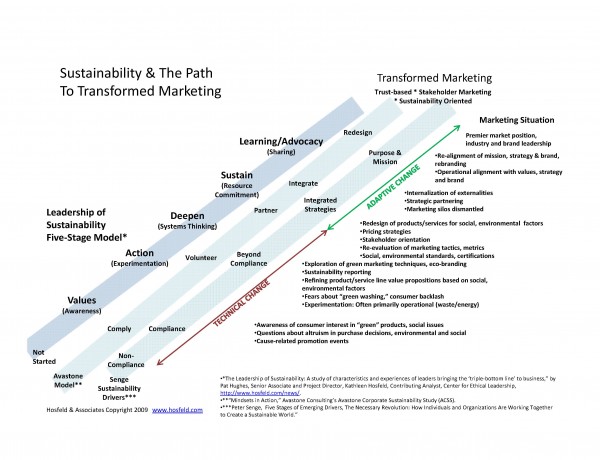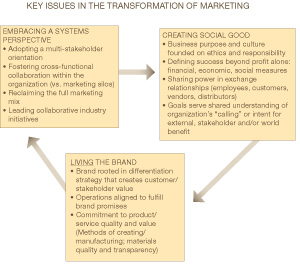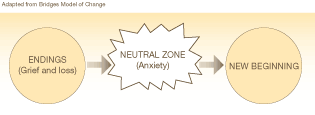Stakeholder Marketing:Building Trust and Loyalty in a Cynical Market
October 14th, 2009 by hosfeldBy Kathleen Hosfeld
We live in an exciting time during which companies are questioning traditional models of marketing, and are pioneering new approaches that create better financial returns. More importantly, more companies are raising the ethical bar on their marketing and seeking to earn both the trust and loyalty of the market. Stakeholder marketing is an approach that does both. It’s something that you may hear more about in the coming months.
What is stakeholder marketing? It’s an approach that recognizes that the “market†is not just a narrowly defined customer target (or series of customer segments). It perceives that customers are interconnected with employees, vendors, government and community, the environment and more. It’s based on the premise that in order to effectively conduct commercial transactions companies must engage with a system of interconnected partners, known as stakeholders.
In the article Transformation of Marketing, I have identified three elements of the emerging model of marketing practiced by high-integrity companies: embracing a systems perspective, creating social good, and living the brand. Stakeholder marketing is an important part of embracing a systems perspective because it engages with the marketplace as such a dynamic system. It can also reflect the intention to create social good, depending on the degree of mutuality to which the company aspires.
The intention of those who’ve practiced stakeholder marketing is to establish, cultivate and deepen positive relationships of trust between their organization and the groups directly affected by their activities. These relationships result in cooperation that helps a company further its goals. For many who practice stakeholder marketing, their goals include service to stakeholders as an end in itself not as a means to an end. Some organizations may see the value of stakeholder relationships only in terms of how they might help the organization achieve goals for growth or profit. Research indicates that stakeholder orientation in a firm correlates to improved financial performance. However, as those who have practiced stakeholder marketing will tell you, the rewards can be far greater.
In the book Firms of Endearment, the authors assert that stakeholder marketing creates such positive relationships and perceptions with stakeholders, that those who practice it spend less to get the word out and to shape public perceptions of their brand. They benefit from significant word of mouth that is fueled by customer loyalty and advocacy.
Serving Instead of Managing
A primary characteristic of stakeholder marketing is that it is not an attempt to manage or control perceptions or behavior. Rather it expresses itself in efforts to engage stakeholders collaboratively to create value together. It incorporates a strong ethic of service not just to customers but also to other partners in the value chain. The following provides an evolving series of stances that organizations can take or have taken in response to stakeholders.
Prior to the advent of the Internet, companies with the financial resources to do so could more easily control the information that audiences received about products or services. Customers and other stakeholders had neither the time nor the money to fully investigate all the companies from whom they might purchase products or services, or with whom they might work. As a result, during this time companies assumed that marketing’s role was to create and protect perceptions of the firm and its products in order to sell.
With the advent of the Internet, all stakeholders gained considerable new information about and influence over perceptions of companies, products and services. Stakeholders were better able to communicate out their experiences of a product, service or company. Other stakeholders were able to access this information, giving them information to either confirm or undermine the company’s own messages. As companies lost some of their ability to control those perceptions, marketing became somewhat more collaborative and transparent. “Managing†perceptions and key stakeholder relationships was an evolution in marketing that acknowledged the difficulty of maintaining control while still seeing control as desirable.
Stakeholder marketing takes a leap into the void by ceding a great deal of control and shifting to an attitude of servant leadership in the exchange process. According to research on companies who practice stakeholder marketing, such companies disclose more, share their standards, ask for feedback and act on the feedback they receive. A company that adopts stakeholder marketing sees innovation potential in finding ways to align stakeholder needs with its own, and has confidence in the good will, loyalty and trust that the process will generate.
Implications for Marketing Planning
How does a stakeholder orientation change marketing planning? In a traditional environment, the company takes in information (from the sales force, from research, from analysts) and uses this to formulate its marketing strategies. In stakeholder marketing, the information gathering process broadens to employees, vendors/suppliers, distributors, communities and regulators – the stakeholder groups that the company identifies as appropriate to its situation — and continues as a form of dialogue. Gathering information from stakeholder groups, feeding this information to the right internal audiences within the company, and formulating responses are the inhale and the exhale of stakeholder marketing. This can seem overwhelming if the company does not have a clear sense of direction and mission. This is provided by clear value propositions.
Value propositions are important ordering agents in traditional marketing planning. They are also extremely valuable in helping companies align stakeholder needs in a stakeholder marketing planning process. The process of establishing a value proposition allows a company to define what it does best and how it contrasts with competitors or substitutes. In traditional marketing, however, the value proposition is created with only one target audience: the customer. In stakeholder marketing, value propositions created for each stakeholder group help to fully develop and articulate both marketing goals and brand values. Creating these propositions also helps identify areas that need to be aligned or reconciled. As a result, marketing strategies become more robust, and marketing efforts more focused. (See related article on value propositions.)
Is it Marketing or is it Management?
One of the tricky things about stakeholder marketing is that it is difficult to isolate the actions of stakeholder-oriented firms that are discretely marketing focused. This, of course, depends on your definition of marketing. In the Michael Porter Value Chain model, marketing is the function of communicating and selling that happens later in the process of supposedly “creating value.â€
If, however, your definition of marketing is like Peter Drucker’s – the entire company as seen through the eyes of the customer – then you believe that all departments and functions hold pieces of the marketing function, and stakeholder marketing identifies the opportunities all along the value chain to create value for all partners – not just customers. The transformation of marketing requires the adoption of such a systems view which breaks down the silos between strategy, management and marketing.
The Firms of Endearment authors assert that companies with a stakeholder orientation spend less money “on marketing.â€Â Based on the case histories of the book, which include Costco, Harley Davidson, and other recognizable names, I disagree. What may more likely be true, however, is that these companies spend less money on sales and promotional efforts – such as advertising – that seek to form or build positive awareness for their goods or services. Why? By virtue of their organizational behavior, and fostering authentic, positive relationships with stakeholders, they have earned such positive awareness. They don’t need to buy it.
As a result, I am tempted to think of principle-based stakeholder marketing as more than an approach. It’s also a philosophy of marketing that is collectively held by all members of the firm. If all company’s decisions are focused on the question of “what creates mutual value between our firm and our partners†the decisions that have the potential to benefit profit and growth can be made virtually anywhere in the organization.
Getting started. Would you like more information on how to get started exploring or understanding how to implement stakeholder marketing? I am working on another article to describe that process. Let me know what you’d like that to cover. Please contact me with your questions and ideas.
 .
.  , I frame three “Key Issues” for transforming marketing, and some (but not all) of the factors they represent.
, I frame three “Key Issues” for transforming marketing, and some (but not all) of the factors they represent. Organizations Can Experience the Stress of Change When Implementing New Branding or Marketing Strategies
Organizations Can Experience the Stress of Change When Implementing New Branding or Marketing Strategies